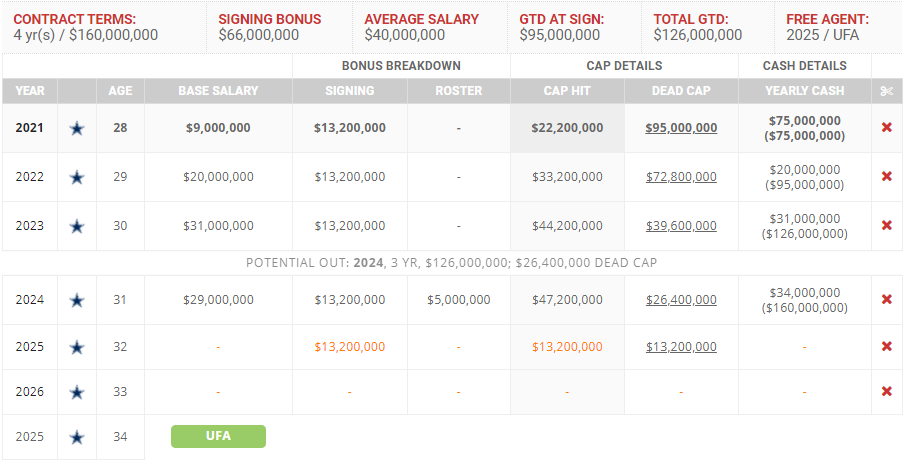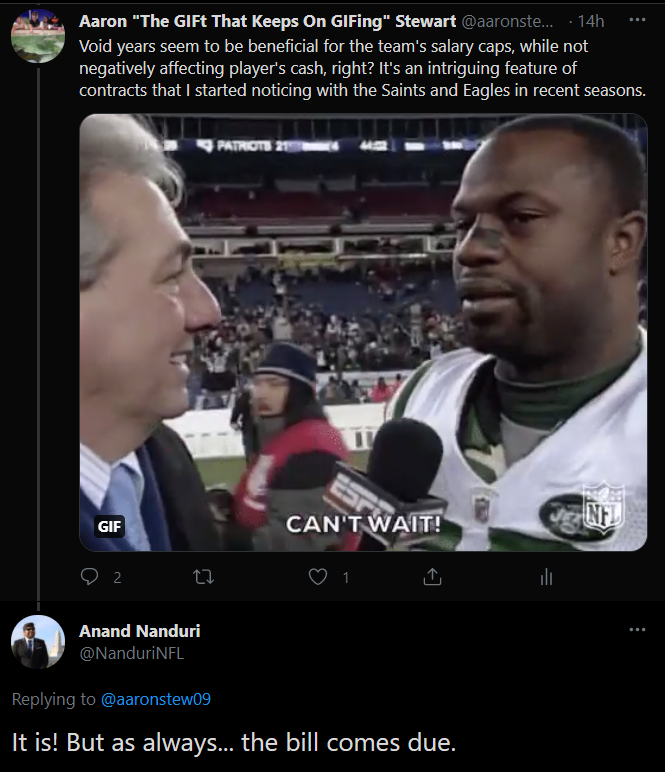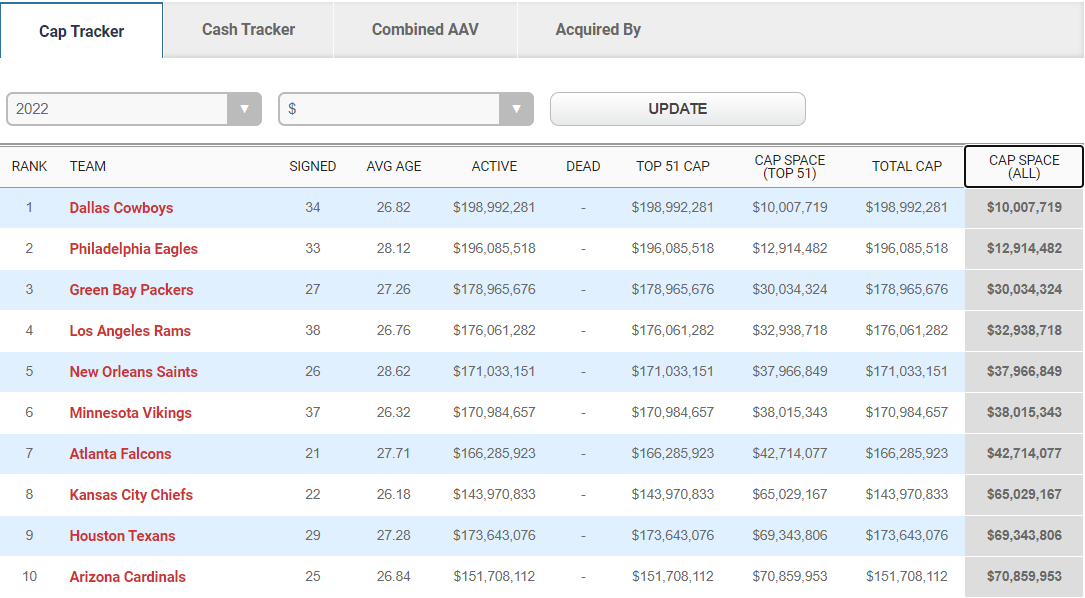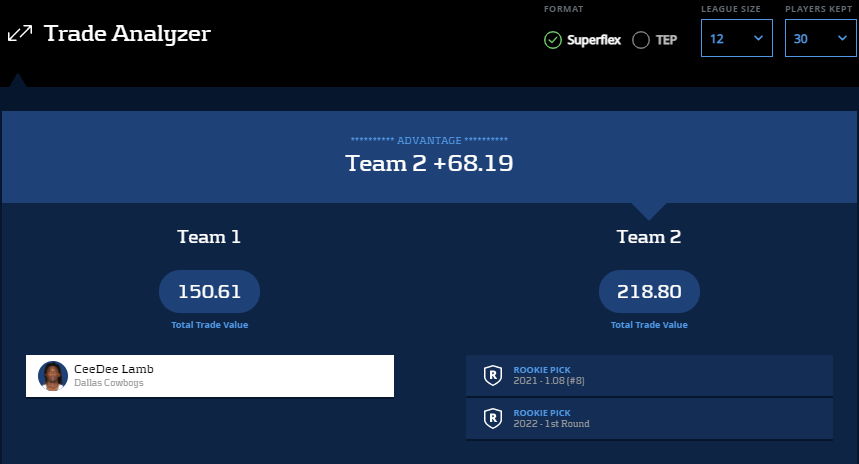On March 8th, the Dallas Cowboys committed themselves to Dak Prescott for the next four seasons as their franchise quarterback. Was this the right move for America’s team? What does it mean for fantasy and, more important, for dynasty going forward? Let’s dive into these questions and discuss why Prescott had all the leverage in the contract negotiations.
Why Was The Franchise Tag NOT Used?
Last season, the Dallas Cowboys placed the franchise tag ($31.41 million) on Dak Prescottfor him to prove himself as a franchise quarterback. A horrific broken ankle shortened his season. So why did the team take a perceived risk on a player coming off a catastrophic injury? Despite my slight mathematical error, the Cowboys could not afford the cap hit of a franchise tag on Prescott in 2021.
A salary cap/contract thread for sad Cowboys fans like me:
-Dallas Cowboys 2021 cap space: $16.2 mil (projected $185 million cap)
-Dak Prescott franchise tag value: $37.7 mil
-$23.5 mil needed to tag Dak
-More money would be needed to, you know, fill out a roster pic.twitter.com/8wZNBdmXab
— Aaron Stewart (@ffbcaptain) March 1, 2021
The price of a second consecutive franchise tag is 120-percent of last season’s salary cap number, meaning that Prescott’s 2021 cap number would have been $37.7 million in 2021 if he was tagged. With an estimated $16.2 million in cap space, the Cowboys would have needed to restructure the contracts of Amari Cooper and Demarcus Lawrence while cutting Tyron Smith andJaylon Smith to fit Prescott’s cap hit under the 2021 salary cap and fill other roster holes.
The Contract Details
As Adam Schefter reported, Dak Prescott signed a four-year, $160 million contract. With an average annual salary of $40 million, how is this a preferred financial option for the Cowboys compared to a $37.7 million franchise tag? The answer is in the details of the contract.
The most important detail of Prescott’s contract is that it’s actually a six-year contract. This is why his contract on Spotrac goes out to 2025 and 2026, despite no base salaries shown for those seasons. However, the last two years of the contract are void years, allowing him to become a free agent after four years. What is the purpose of void years in contracts? Friend of theCode Breaker podcast, Anand Nanduri from the NFL, confirmed my understanding of void years.
For players, it doesn’t affect their cash. But it allows the teams to spread out the cap hits over a longer period. For the Cowboys, that means Prescott’s $160 million contract is spread across six years (an average cap hit of $26.7 million per season), instead of four years.
NFL contracts generally have cap hits that increase over the course of the contract. Cap hits are what count against the yearly salary cap and, since the salary cap usually increases each season, an increasing cap hit is softened by the increase of the salary cap. For the Cowboys, their 2021 cap hit on Prescott’s contract is $22.2 million. That’s much better than the $37.7 million it would have been if they tagged Prescott for a second consecutive season and allows them short-term flexibility to improve the rest of their roster.
Welcome ‘Dak’ To the Field!
Any dynasty team with Dallas skill position players rejoiced at the news yesterday. Dak Prescott was in the midst of a career season before his injury. His 55.6-percent (No. 3 among qualified quarterbacks) Deep Ball Completion Percentage, 47.5-percent (No. 8) Pressured Completion Percentage, and +18.8 (No. 4) Production Premium were replaced withAndy Dalton‘s 28.6-percent (No. 30) Deep Ball Completion Percentage, 38.3-percent (No. 22) Pressured Completion Percentage, and -18.9 (No. 31) Production Premium. The Cowboys receivers struggled to produce with the poor quarterback play of the backup.
https://www.youtube.com/watch?v=9-2lwmsLzJ0
Want to see the fantasy football impact of a franchise quarterback? Look no further than the team’s top two pass-catchers last season, Amari Cooper and CeeDee Lamb. In Prescott’s five starts, Cooper finished with four top-24 wide receiver performances, and Lamb finished with three top-24 wide receiver performances. Both played in all 16 games; in 11 games without Prescott, Cooper had four top-24 wide receiver performances and Lamb only had one top-24 wide receiver performance, and that was in Week 16.
Dynasty Impact
An objective of this article series is to give readers an upper hand in dynasty leagues. Looking ahead to 2022, The Cowboys are projected to have the LEAST amount of cap space in the NFL with $10 million in cap space ($182.5 million projected salary cap) and only 34 players under contract.
Eight players carry a 2022 cap hit of $10 million or higher. Now that Dak Prescott is no longer on an NFL rookie fourth-round pick salary, the Cowboys won’t be able to keep as many expensive players on their cap sheet.
Prescott isn’t going anywhere for the next four seasons, and CeeDee Lamb will remain in Dallas for at least three seasons on a manageable rookie contract (not including his fifth-year option). However, 2022 is conveniently the first year that Amari Cooperhas an out in his contract where the Cowboys can save $16 million on the 2022 salary cap with only a $6 million dead cap if they cut him. His contract would create the single-most amount of cap space among all potential 2022 cap casualties on the roster.
Lamb isn’t cheap in dynasty leagues now, but it wouldn’t be surprising to see him become PlayerProfiler’s No. 1-ranked dynasty wide receiver by this time next year. The trade calculator will say that it’s an overpay to offer a mid-to-late 2021 first-round pick and a 2022 first for him, but this is a gamble I’d make.
Lamb was the consensus No. 1 WR going into rookie drafts last year and showed what he could do with competent quarterback play at the start of the season. His 1.82 (No. 43) Yards Per Route Run, 1.92 (No. 40) Fantasy Points per Target, and +4.3 (No. 32) Production Premium were solid efficiency metrics that can be improved with Prescott’s return. In the five games that Prescott played, Lamb averaged 2.27 Yards Per Route Run which, over the course of the full season, would’ve tied him with D.J. Moore for the No. 12 mark.














